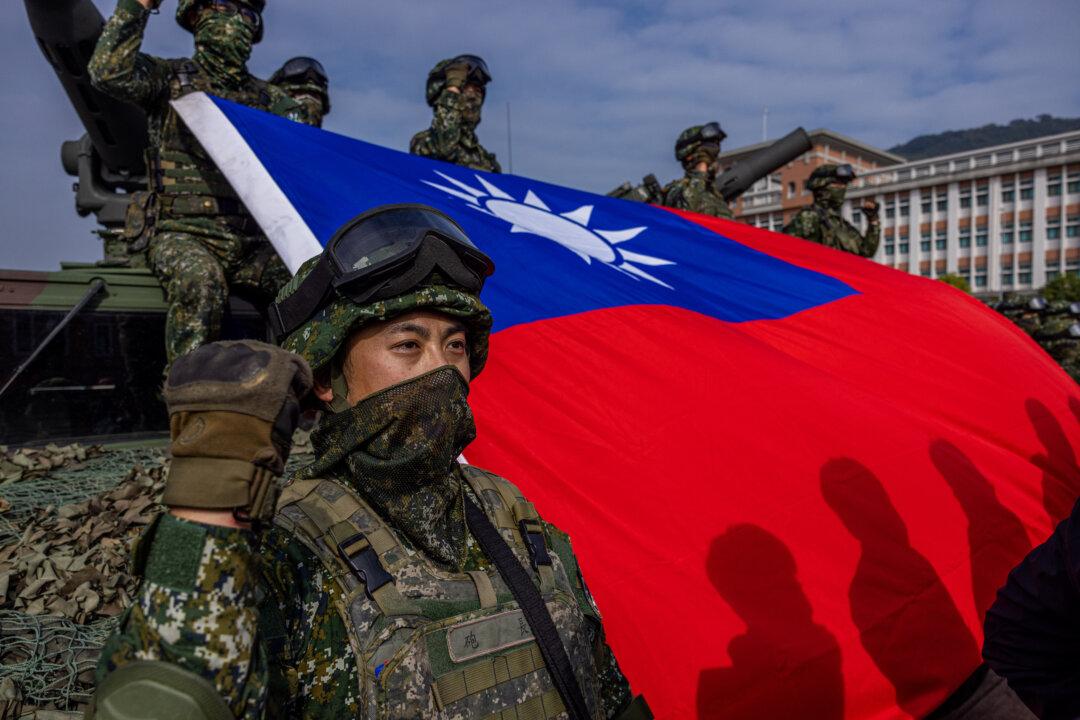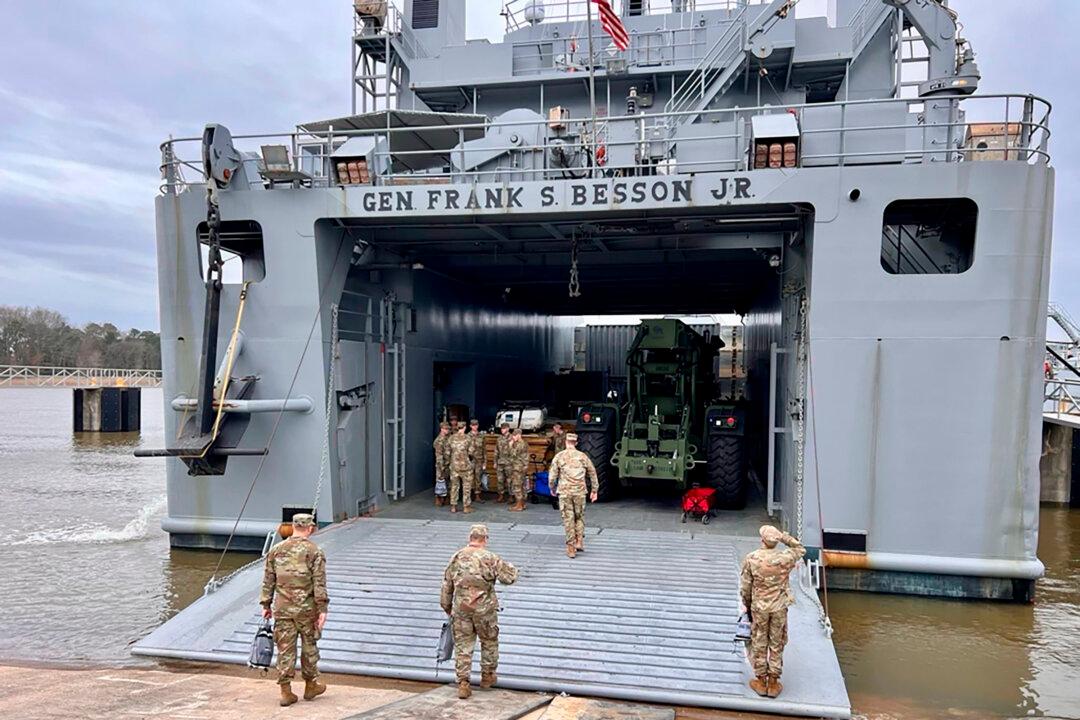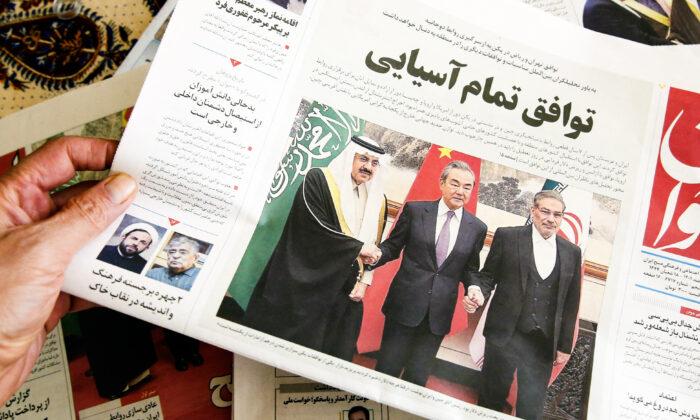In some ways, war with the Chinese Communist Party (CCP) started when an Australian aircraft carrier was sold for scrap in 1985. The obscure story of the HMAS Melbourne is fascinating tale of glory in service and intrigue after being paid off.
The Melbourne was the pride of the Royal Australian Navy and also, unfortunately, has the ignominious distinction of having sunk two allied ships—but that’s another story. Enter Xu Zengping, an interesting personality of the CCP apparatus.
He secured the vessel for “scrap” but, for years, observers noted it tied up pier-side, with technicians crawling all over its catapult and arresting gear, which are the heart and soul of a carrier. The chief engineer is constantly in contact with the skipper on the maintenance status of this complex machinery.
Bonnie Girard, a China expert and freelance White House correspondent who worked at the Australian Embassy in Beijing in the late 1980s and early 1990s, said diplomats there lamented the sale of the carrier, calling it a “mistake.”
“China’s subterfuge in acquiring the Melbourne for its secrets, not its steel, became its standard operating procedure for acquiring Western technologies,” Girard said.
Shortly after this episode, a replay occurred. Xu used a more mature front-company arrangement to buy the ramshackle Varyag—a Soviet-era carrier that the cash-starved Ukrainians readily sold (with or without engines, depending on whom you talk to). A new casino for Macau was the storyline on how the Varyag would be used.
National security experts gave this odd transaction a big “ho-hum.” However, the People’s Liberation Army Navy (PLAN) admirals saw this as their beginning and foresaw a future worldwide fleet for the CCP. Now, the Varyag sails the seas probing Taiwan as the Liaoning.
So, a bravo to Xu—as usual, the CCP read and studied our history. George Doole, thought to be working for the CIA, pioneered the front-company architecture. Under the direction of the Dulles brothers, Doole bought out Civil Air Transport from Mr. and Mrs. Chennault and expanded the airline network with a labyrinthian structure of front companies into a breathtaking worldwide influence operation—until shut down by the Church Committee in the 1970s.
When Was the Pearl Harbor Moment?
War and conflict can take many forms.It’s not necessarily Japanese dive bombers, torpedo bombers, and fighters pummeling Battleship Row in Pearl Harbor. That’s visual, tangible, and an undeniable manifestation of intent, but struggle for dominance can take many forms. The petri dish debacle at Wuhan was actually not the Pearl Harbor moment.
The Pearl Harbor moment was one word: fentanyl.
In a war by any means, first articulated in the ‘90s, the CCP put their Prussian “General Staff” on a war footing, under the aegis of “Unrestricted Warfare”—U.S. Air Force Brig. Gen. Rob Spalding used the term “Stealth War” for his book to give a key moniker or title for these proceedings.
Fentanyl has been killing well north of 30,000 Americans a year for several years. Again, the national security culture until recently gave the fentanyl campaign again a big “ho-hum.” We’ve been dusting off from a CCP-perpetrated bio exposure (not saying the original release was intentional, but once it happened, they exploited it aggressively to share the contamination with the world).
Consider the deaths of 30,000 American citizens a year. That’s about half the loss during the entire Vietnam War, or more than the annual loss from very manipulated gun death statistics (gun control activists like to use Centers for Disease Control and Prevention data, not FBI stats and throw in an immense amount of suicides).
So, the game is on. Pearl Harbor happened several years ago, and no one noticed. The CCP exploited our open society and antiquated mail system to deliver death into our homeland. Our national security apparatus stood by and failed to take action until recently.
Time for a new intelligence service—far too much time has been spent by the culture of junior (and senior) operatives running the hallways of the Eisenhower Executive Office Building and other places focused on palace intrigue and toppling our president, rather than facing the real threat.
How’s the War Going So Far?
It perhaps wasn’t the original campaign plan, but when President Donald Trump strode triumphantly into the State of the Union speech on Feb. 4, 2020, a super-human victor over every possible trickery to unseat him, the CCP planners and leaders panicked. The metrics were undeniable: The United States had established the most dominant world economy in modern history.In a dialogue on this topic, Spalding had this observation about the true center of gravity, “Like the air war I planned for the B-2 in Kosovo, I recognized an economic war hiding in plain sight.”
What’s the Strategy for Victory?
Essentially, there are three parts of the strategy for victory in the worldwide struggle against the CCP. First and foremost, an education process and counter-influence campaign is needed to fully communicate the mortal threat posed by the CCP. All Americans and citizens of the world who believe in liberal, democratic republics must understand that this is real and personal—their way of life is in mortal danger. This isn’t abstract, this is real; 30,000 Americans killed a year by fentanyl—that’s real, tangible, and personal.Next, the Arsenal of Democracy 3.0 must be turned on. We must rapidly build, generate, and project naval and air power to deter the CCP from doing what totalitarians always do when they’re in trouble—invade another country. The more we sweat now, the less we’ll pay later, and the likelihood of kinetic engagements will diminish as a result of this ramp-up. An adjunct to this line of effort is to cut off all financial liquidity to the CCP. Cash is their lifeblood.
We also need fighting generals and admirals placed in position now. We need the likes of Eisenhower, Marshall, Bradley, and Patton brought to the forefront (sorry to be Army-centric). The buildup to deter the CCP is primarily a naval, air, special operations, space, and cyber game—but a powerful Army must be ready to be applied at the right place at the right time if needed.
Third, create the environment for the citizens of China, who are the real center of gravity, to decisively deal with this situation. This is what the CCP fears most.
So, where currently is Xu (the aircraft carrier entrepreneur)? That’s a great question. One story is that he’s out of favor and has disappeared. In actual totalitarian systems, there are no cable networks to run to and set up a regime in exile when out of power. You’re simply gone.






Friends Read Free